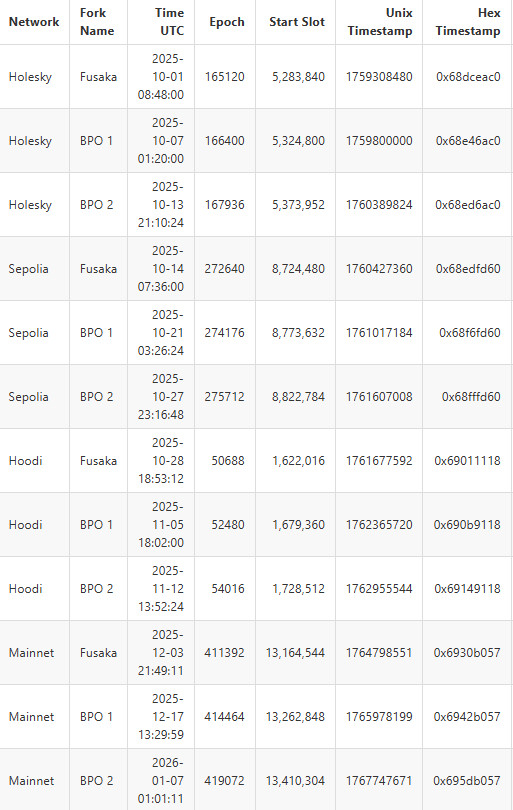Fusaka Upgrade
Fusaka is Ethereum’s next major upgrade. It aims to improve both the execution and consensus layers of the network. It builds on previous improvements in staking, data management, and Layer-2.
What will change with the Fusaka upgrade?
The Fusaka upgrade aims to enable Ethereum to process more transactions efficiently while keeping the load on node operators and validators in check. One of the most prominent changes is the increase in the block gas limit from 45 million to 150 million. This gives blocks the capacity to run many more transactions and smart contracts.
There are two key innovations that made this expansion possible: PeerDAS and Verkle Trees. PeerDAS allows validators to check small pieces of data from different sources instead of downloading the entire data, which significantly reduces the computational burden on nodes. Verkle Trees packs the evidence of the data in the chain more tightly, making it faster and easier to process. Combining the two technologies accelerates network scaling while maintaining manageability for those maintaining the infrastructure.
In addition, the upgrade includes security measures to maintain the stability of the network. Some EIPs impose limits on block and transaction sizes and reorganize gas costs for complex transactions. For example, EIP-7934 limits the size of execution blocks to 10 MB, while EIP-7825 sets a per-transaction gas limit, both protecting against DoS attacks and ensuring the speed at which blocks propagate through the network.
What is the purpose of the upgrade?
Ethereum’s rapid growth has at times led to network congestion, causing DeFi, NFT, and Layer-2 users to face high transaction fees and long confirmation times. The Fusaka upgrade addresses these issues by increasing block capacity and improving data sharing mechanisms, especially for blob-based Layer-2 transactions.
For developers, Fusaka offers innovations such as native support for the CLZ opcode and secp256r1 signature verification. This makes the operation of smart contracts and cryptographic operations faster and more efficient. On the user side, the pre-clearance feature that comes with EIP-7917 reduces delays by allowing transactions to predict which block they will be placed in.
While increased block limits mean more responsibility for node operators, technical solutions such as PeerDAS and Verkle Trees ease this burden. Still, network participants need to maintain synchronization to avoid possible fork risks or temporary outages.
***Planned timeline for Fusaka deployment
Source: Barnabas Busa
Contribution to the Layer-2 Ecosystem
The Fusaka upgrade is of great importance to the Layer-2 ecosystem because it aims to reduce the most fundamental cost of rollups: data writes. Thanks to PeerDAS and the gradual increase in blob capacity, Layer-2s will be able to push more transactions to L1 at a lower cost. This will reduce the transaction fees paid by users and avoid congestion during peak network periods. In addition, updates to the blob fee mechanism will make the costs of Layer-2s more predictable. secp256r1 support and pre-certification mechanisms will improve the experience of both developers and users, making Layer-2 solutions more secure, faster and more efficient. In short, Fusaka stands out as one of the most critical steps in strengthening the viability of Ethereum’s “rollup-centric” scaling strategy.
Disclaimer
This overview of the proposed “Fusaka” upgrade is for informational and educational purposes only and does not constitute technical, legal, or investment advice. Features, EIPs, timelines, and specifications may change before mainnet deployment; some items remain experimental or speculative. Always consult official Ethereum Foundation resources, client release notes, and independent security reviews, and do your own research before making development, operational, or financial decisions.






